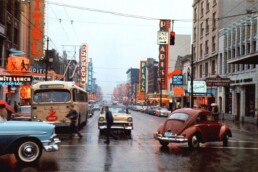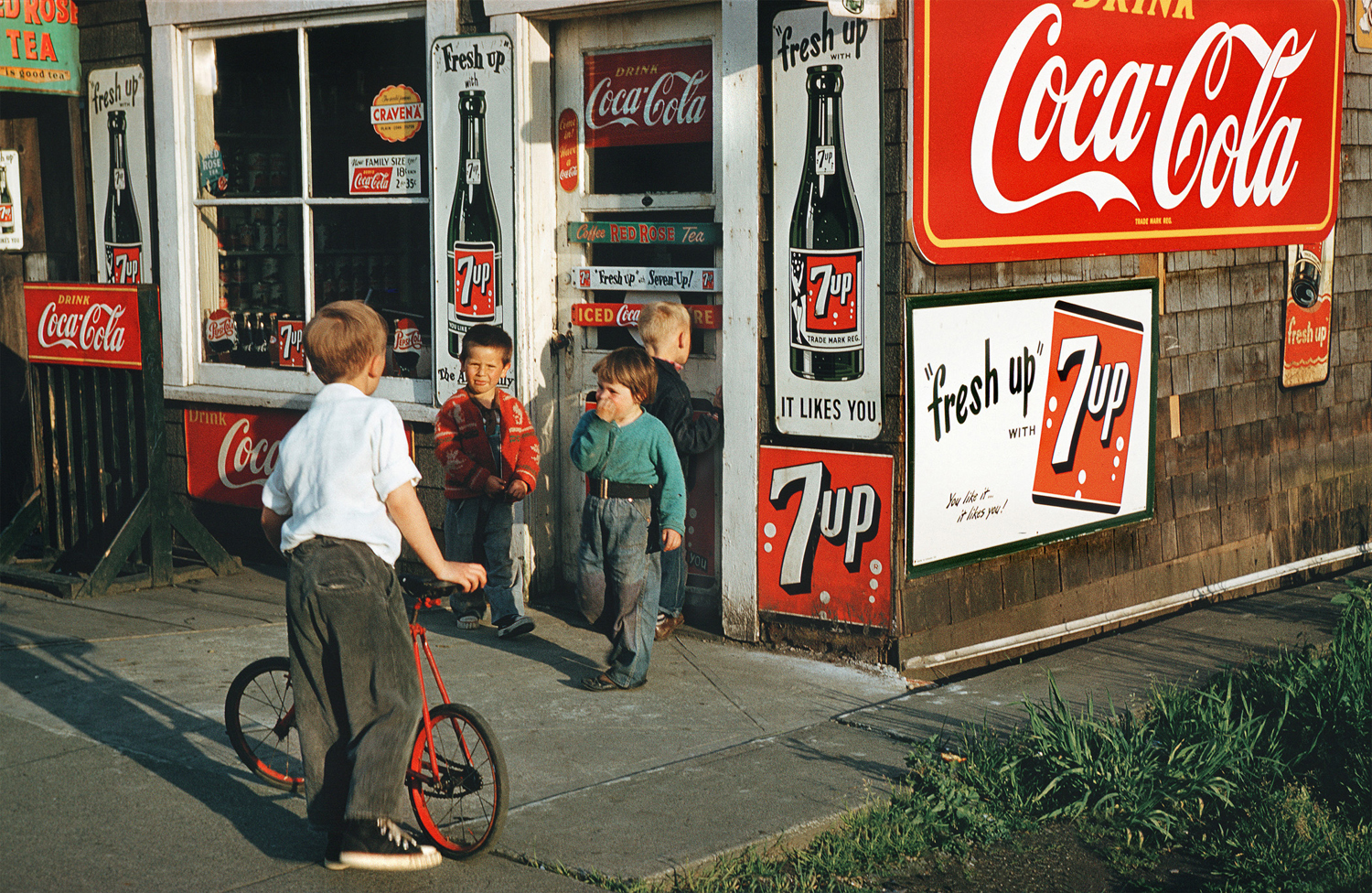Fred Herzog and how time effects our work
Fred Herzog was a pioneer in using color in street photography, depicting genuine moments in 1950s-60s Vancouver. His fascination with neon signs showcases the liveliness of urban culture. Herzog’s work is celebrated for capturing the essence of the era and evolving in significance over time.

Photography is the process of capturing light to create an image; that captured image is a moment in time now frozen. This is not a complicated concept, but one which I think has an often under appreciated element.
Myself having being inspired to take up photography after seeing the works of the likes of Harry Gruyaert, I set out to create a style and portfolio of my own, learning the techniques and skills to manipulate the medium of photography and capture the world as I wanted to show it. I do not think this is wrong. Nevertheless, the work of Fred Herzog, has brung a new dimensions to how I see street and documentary photography.
Photography of Fred Herzog
Fred Herzog was a pioneer in the use of color in street photography. His images, primarily of Vancouver during the 1950s and 60s, not only depict the people and scenes of that era but also encapsulate the essence of the time—the technology, the fashion, the very atmosphere of those moments.
For Fred Herzog, the essence of photography lies in capturing genuine moments rather than constructing them. In a series of interviews with John Mackie of the Vancouver Sun, Herzog explains, “Photographic finesse has its place, but it can also get in the way. I was trying to show vitality. The pictures are about content, and more content. And if there is no content, take no picture.” His work reflects this ethos, showcasing scenes as they are, without embellishment. “I take pride in saying these are all how we looked, not how we wanted to look, or staged,” Herzog asserts. “You cannot stage pictures.”

Neon illustrations
Herzog’s fascination with neon signs is a recurring theme in his work. To him, they symbolize the liveliness of the urban landscape. “Oh, neon signs. This is one of the greatest uses of technology, to make people happy,” he reminisces. Herzog’s iconic photograph of the neon jungle at Hastings and Carrall in 1958 captures this sentiment. “I don’t take credit for it looking like this. What I can’t believe is that there are no good pictures of that. That was a fabulous strip.”
His appreciation for these glowing advertisements extends to their role as cultural artifacts. “The signs are a very, very important pictorial part of the American city. I won’t even say pictorial, an important cultural part of the American city. If you take the Coca-Cola and other signs away from America downtown, you have nothing.” Herzog’s work offers a window into a time when these signs were integral to the city’s identity.
Capturing Culture Through Time
Herzog’s body of work, comprising thousands of slides and negatives, paints a vivid picture of Vancouver’s past. His photos of second-hand stores, barber shops, and bustling streets serve as a microcosm of American culture. “I call them a microcosm of American culture because that’s exactly what it is, of all the things we want to have,” he says. “All the things we need to have, and all the things we’d love to have wind up in second-hand shops in that kind of condensed fashion.”

“This [photo of a second hand store window] is an art piece. I’m not saying my picture is an art piece. But if you could freeze that window and carry it into an art gallery, you could show that in New York and ask $50,000 for it. And you’d get it. And they’d say ‘Why didn’t I know about it? Now I have to pay $100,000, because that guy wants to sell it to me for $100,000.’
“That’s how much that store would be worth if you could have preserved it and transported it to New York as is, authentically. To have a photograph of that is the next best thing. And who else would have thought of taking that then?””
Reflecting on his journey, Herzog acknowledges the recognition he has received later in life. “It’s wonderful. Let’s face it, we don’t want to live under a log. All of a sudden, I have found recognition for something…it’s a funny thing.” His work, once overlooked, is now celebrated for its historical significance and artistic merit. “This has been a coincidence of things. One is that Kathleen [Bartels], who is directing the Vancouver Art Gallery, wants this sort of thing. The other thing is that it’s technically possible now to make them to a budget and to make them very good.”
The Nature of Time in Photography
Photos are often thought of in layers, and by consciously choosing specific elements for composition, photographers can add depth and meaning to their images. Fred Herzog exemplifies this approach; his photography includes a temporal layer, capturing fleeting moments that evolve in significance over time. His photos, such as the vibrant neon signs of 1950s Vancouver, not only depict a scene but also encapsulate the era’s essence—a layer of history that gains new dimensions as time passes.
